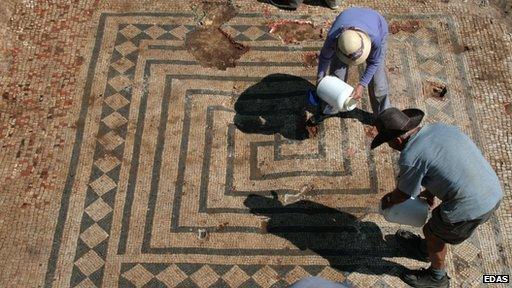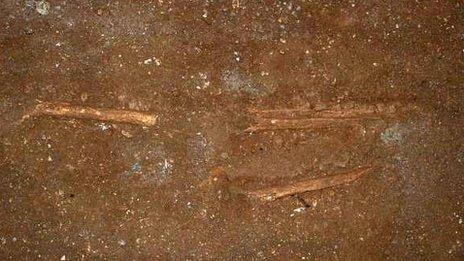Two Roman mosaics set to be unearthed at Puddletown
- Published

A swastika-style mosaic was discovered on the site of the villa
Work is due to begin on unearthing two mosaics discovered at the site of a Roman villa in the Dorset countryside.
The first signs of the mosaics were spotted last year at the site near Puddletown which is being excavated by volunteers.
Lilian Ladle of the East Dorset Antiquarian Society said it was "very fortunate" they had survived.
The mosaics which are due to be fully uncovered are thought to be part of a corridor pavement or a room floor.
Archaeological studies of the 100m by 200m (330ft by 660ft) site near Druce Farm, began in 2012, external after geophysical surveys revealed the presence of a villa complex.
Owl pellets
A large floor mosaic was discovered during a dig last year.
Volunteers are set to work through the summer on two trenches to fully reveal the more recently discovered mosaics.
"To find a pavement is very rare - it's very fortunate it has survived. On first inspection it is very well preserved," said Ms Ladle.
The villa is believed to have been inhabited between AD200 and AD500.
Pottery, coins and drinking vessels have already been found which indicate it was a "large, high class villa," with buildings surrounding a courtyard.
It is close to the Roman town of Durnovaria, modern-day Dorchester.
The building's age has been calculated by analysing thousands of barn owl pellets. The birds are thought to have roosted in the building when it became disused.
"We are learning so much on a daily basis, it's very exciting," said Ms Ladle.
- Published13 February 2012

- Published10 March 2011